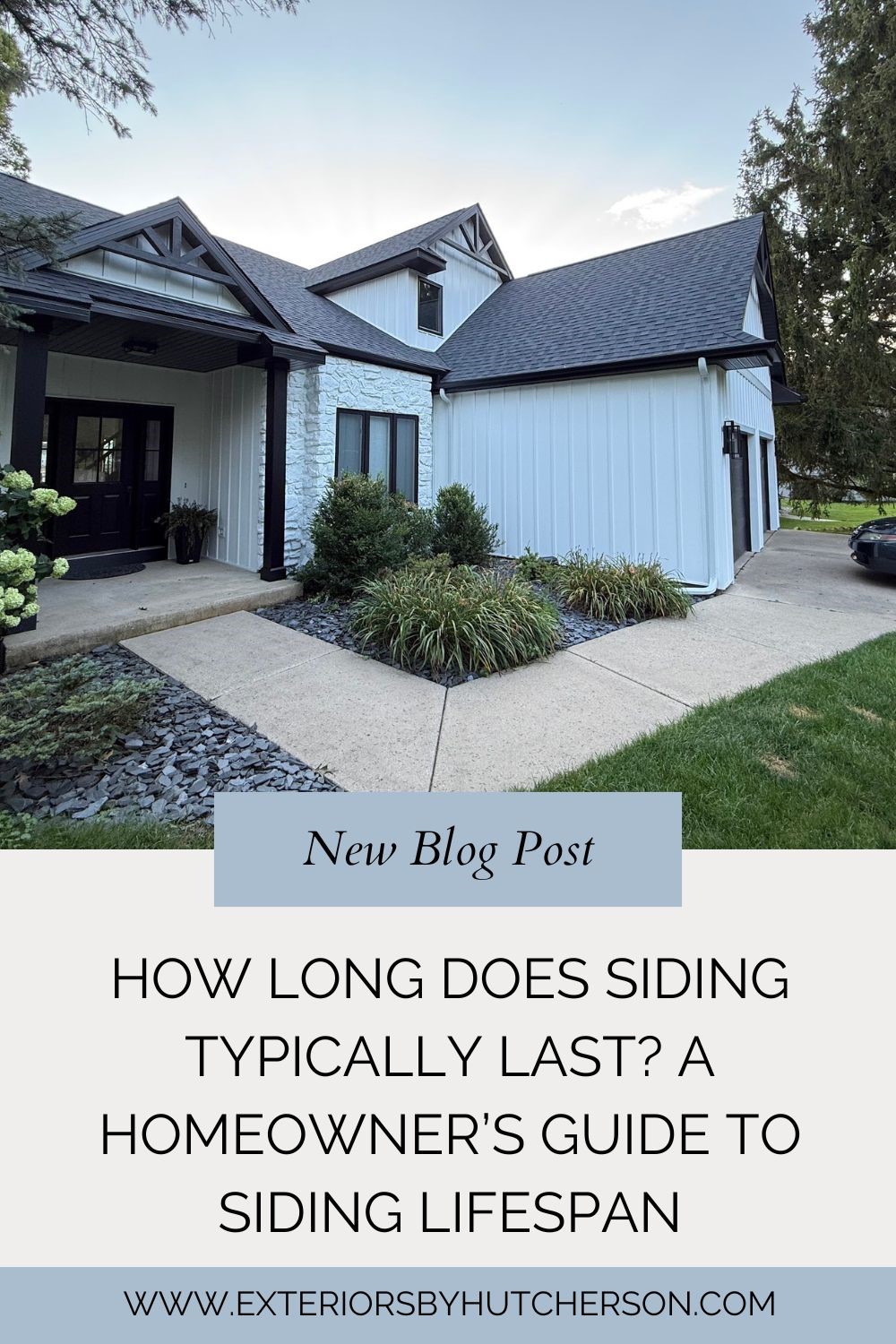When you invest in new siding, you’re not just upgrading your home’s appearance — you’re protecting it from Michigan’s harsh weather, moisture, pests, and long-term structural damage. One of the most common questions homeowners ask is:
“How long will my siding actually last?”
The answer depends on the material, installation quality, climate, and how well it’s maintained. Let’s break it down so you know exactly what to expect.

Average Lifespan of Common Siding Types
Vinyl Siding
Typical lifespan: 20–40 years
Vinyl is one of the most popular siding choices due to its affordability and low maintenance. While it doesn’t rot or warp, it can fade, crack, or become brittle over time — especially after decades of sun exposure or extreme temperature changes.
Pros: Affordable, low maintenance
Cons: May fade or crack with age
Fiber Cement Siding (James Hardie®)
Typical lifespan: 30–50+ years
Fiber cement is known for its durability and resistance to fire, pests, and rot. When professionally installed and properly maintained, it can last well over 50 years, making it one of the longest-lasting options available.
Pros: Extremely durable, weather-resistant
Cons: Higher upfront cost, heavier material
Wood Siding
Typical lifespan: 20–40 years
Wood siding offers classic charm and character but requires consistent maintenance. Without regular sealing, staining, or painting, it can become vulnerable to moisture, insects, and rot.
Pros: Natural beauty, timeless look
Cons: High maintenance, prone to damage if neglected
Engineered Wood Siding
Typical lifespan: 20–30 years
Engineered wood provides the appearance of real wood with added moisture resistance and durability. While it performs better than traditional wood, its lifespan still depends heavily on maintenance.
Aluminum Siding
Typical lifespan: 30–40 years
Aluminum doesn’t rot or attract pests, but it can dent easily and may fade or chalk over time. It’s become less common, but many homes still have it.
What Impacts Siding Longevity?
Even the best siding materials won’t reach their full lifespan without proper care. Here are the biggest factors that determine how long your siding will last:
Quality of Installation – Poor installation can shorten lifespan significantly
Weather Exposure – Freeze/thaw cycles, wind, and moisture take a toll
Sun Exposure – UV rays can cause fading and brittleness
Maintenance Habits – Regular cleaning and inspections extend life
Ventilation & Moisture Control – Improper airflow can trap moisture behind siding
Signs Your Siding May Need Replacing
If your siding is nearing the end of its lifespan, look for these warning signs:
Cracking or warping panels
Fading or peeling paint
Mold, mildew, or water stains
Soft spots or rot
Increased energy bills
Frequent need for repairs
If you notice any of these, it may be time for a professional inspection.
How to Extend the Life of Your Siding
Want to maximize your investment? Try these tips:
Wash siding annually with mild soap and water
Schedule routine inspections
Repaint or reseal when needed
Trim trees and bushes away from the home
Address moisture issues quickly
So, When Should You Replace Your Siding?
If your siding is more than 20–30 years old and showing visible wear, it’s smart to start planning for replacement. New siding not only boosts curb appeal but also increases energy efficiency, protects your structure, and improves resale value.
Thinking About New Siding?
At Hutcherson Construction, we help homeowners choose siding that fits their style, budget, and long-term goals. Our team provides expert installation and high-quality materials designed to stand up to Michigan’s elements.
📞 Ready for a FREE siding evaluation? 269-685-0900
Contact us today to schedule your estimate and explore your options.

Tags
Subscribe to Hutcherson Construction's Blog








Comments